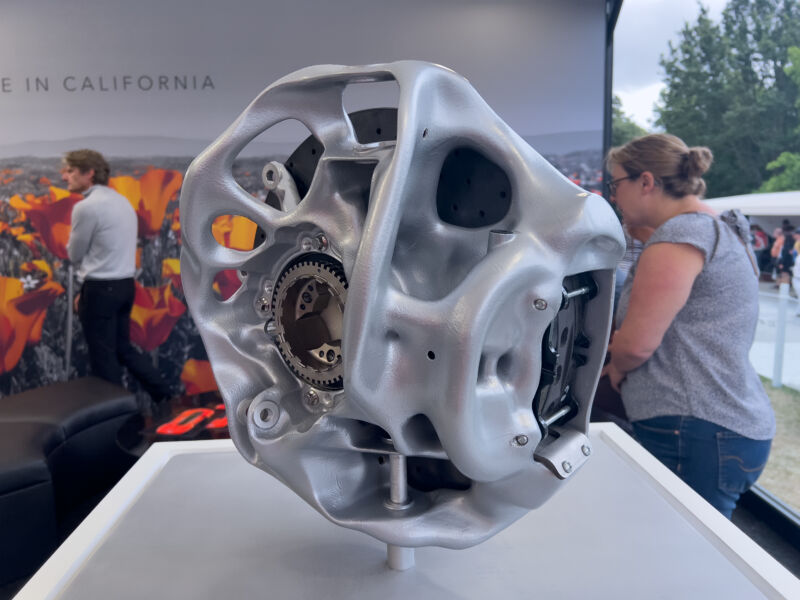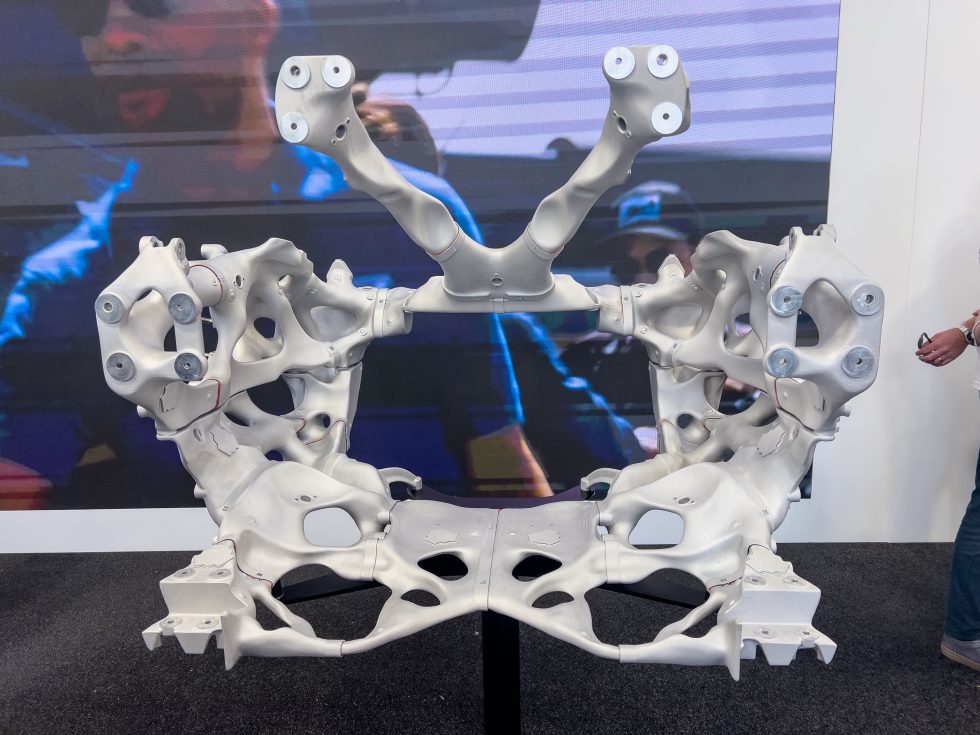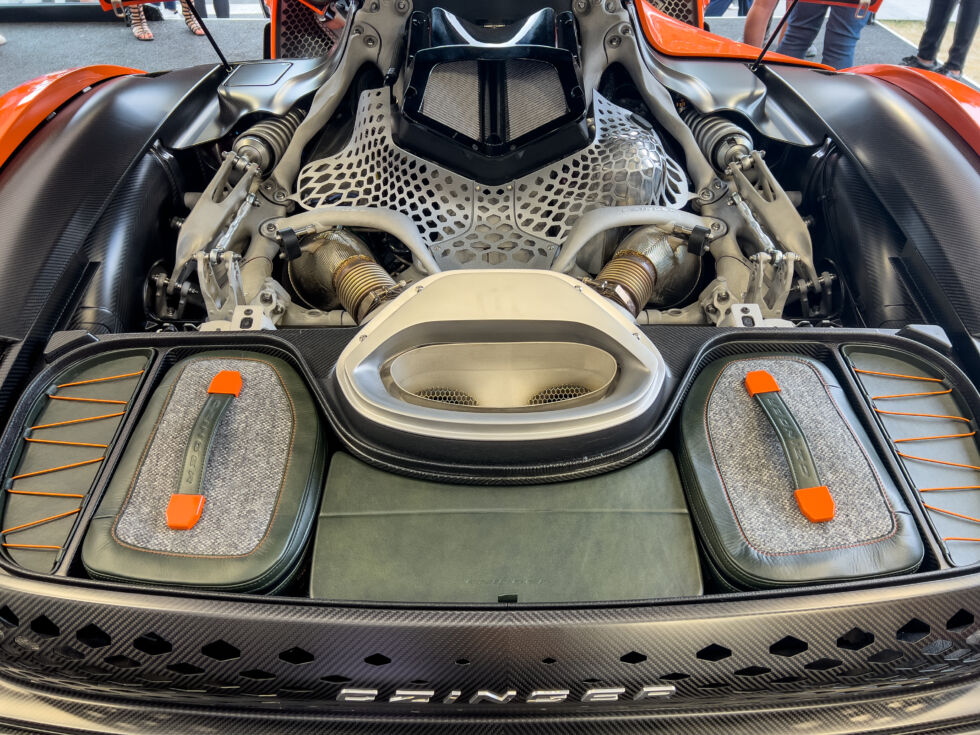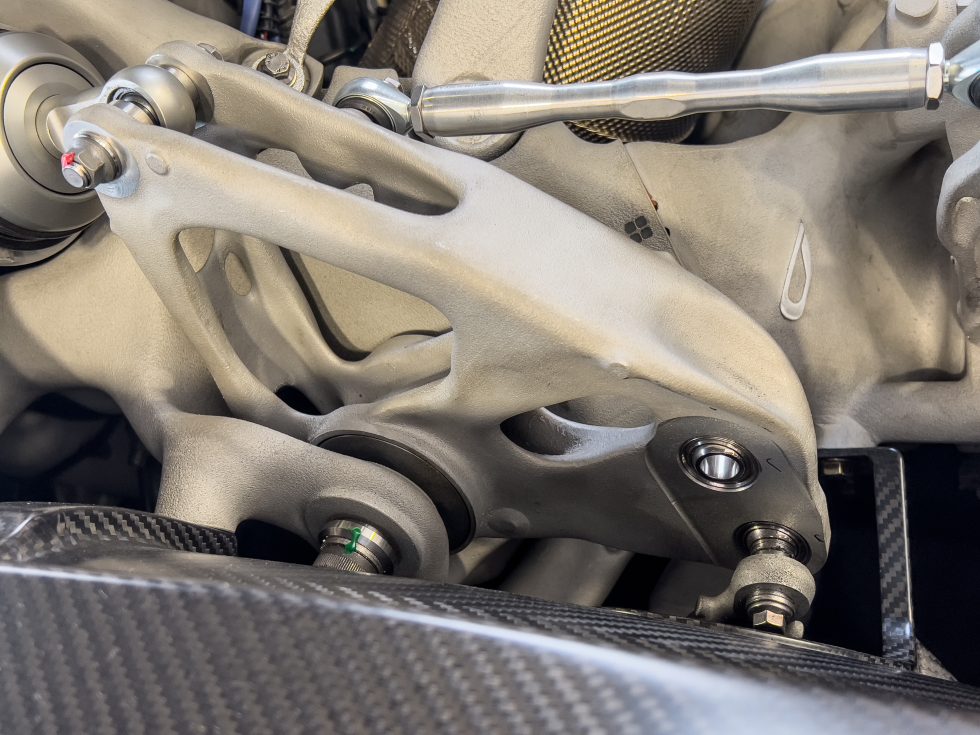
Jonathan Gitlin
Additive manufacturing, or 3D printing because it’s extra generally recognized, is extra a device for fast prototyping within the auto trade than manufacturing precise elements for use on precise automobiles. Properly, principally. An attention-grabbing firm working on this area is Divergent 3D, which has already been supplying 3D-printed elements like subframes for low-volume automobiles for a number of automotive firms, together with Aston Martin and Mercedes-AMG.
Divergent gave rise to a different startup referred to as Czinger, which acts as one thing of a showcase for Divergent’s printing tech, utilizing it to construct what it says would be the world’s quickest manufacturing automotive. We caught up with firm founder Kevin Czinger at this 12 months’s Goodwood Competition of Pace, the place amongst different issues, we found Divergent has diversified its consumer base and is now stepping into aviation, 3D printing wings for the drone maker Common Atomics.

Jonathan Gitlin
We took a have a look at the Czinger 21C ultimately 12 months’s Monterey Automotive Week—to shortly recap, it is a tandem-seating hybrid supercar with 1,250 hp (932 kW) and an unlimited quantity of aerodynamic downforce that has allowed it to interrupt manufacturing automotive observe data at Laguna Seca and the Circuit of the Americas.
Making a automotive firm to point out off what Divergent’s printing tech can do appeared like an apparent transfer for Czinger. “You do not know what the instruments actually are going to be except you hyperlink the creation of an precise product that requires efficiency to the cost-productivity of the instruments, the fabric necessities that they’ve,” he informed Ars.
“As a result of, for instance, to actually print—to not do what persons are doing right now when it comes to prototyping, however to do what we’re doing for the primary time on the planet, which is industrial-rate manufacturing—you need to design a printer that’s tuned to your materials qualities, which in flip are tuned to your specification and necessities of performance for the product, all of that must be designed collectively,” Czinger defined.

Jonathan Gitlin
The 21C advantages tremendously from the usage of 3D printing—elements consolidation has resulted in vital weight financial savings in comparison with extra typical development strategies. The ensuing elements look far more natural than the mechanical bits you’d discover in nearly some other automotive, and, for example, the brake node combines the caliper and a suspension upright however has 40 % much less mass than a extra regular meeting.
“Going again to first ideas, I imply, what’s actually taking place is, it’s totally very similar to evolution. Nature is an vitality system, proper? And in case you have a strategy of competitors for materials and vitality, which is what it truly is, then kind is following perform. While you exit into your backyard, you see the flora and the fauna, and it appears to be like a sure manner, that is due to that eons-long competitors for materials and vitality,” Czinger mentioned.
“That is utilizing, actually, the large know-how innovation of the final 75 years, which is computing energy—utilizing computing energy to reflect that strategy of optimization of necessities, efficiency, to attenuate the usage of materials and vitality. And it then finally ends up wanting natural as a result of it is mirroring these natural course of,” he defined.

Jonathan Gitlin
Czinger will begin delivering its first 21Cs within the fourth quarter of this 12 months. “it will be absolutely crash-certified car, no exemptions for North American certification. And, it will be emissions-compliant for California for 2028 compliance,” Czinger informed Ars.
Not only for automobiles
I used to be very to study that Divergent had broadened its consumer base to begin printing elements for the aerospace trade, too. In February, Divergent partnered with Common Atomics, which makes uncrewed and remotely piloted plane.
“They got here to us a couple of 12 months in the past and mentioned, ‘We have spent three years designing these new smaller drones. It has a couple of 2-meter-long fuselage. we’re constructing it out of laid-up carbon fiber due to mass concerns, however we will not hit our mass targets after three years, we will not hit our price targets, we will not hit our manufacturing cycle as a result of it takes 12 days to hand-lay up and construct one in every of these,'”Czinger defined.
“Inside three months utilizing our system on the primary aerospace construction we constructed, we offered them with flight-ready {hardware} that diminished the variety of elements by integrating various things like gas tanks into the pores and skin, diminished the variety of elements from over 180 to 4, we diminished mass by over 5 % despite the fact that we had been utilizing our aluminum alloy versus carbon fiber,” he informed me.
Common Atomics now has greater than 240 printed elements flying on take a look at plane however says it is aiming for between 30–80 % of the elements on a small drone to be 3D printed.